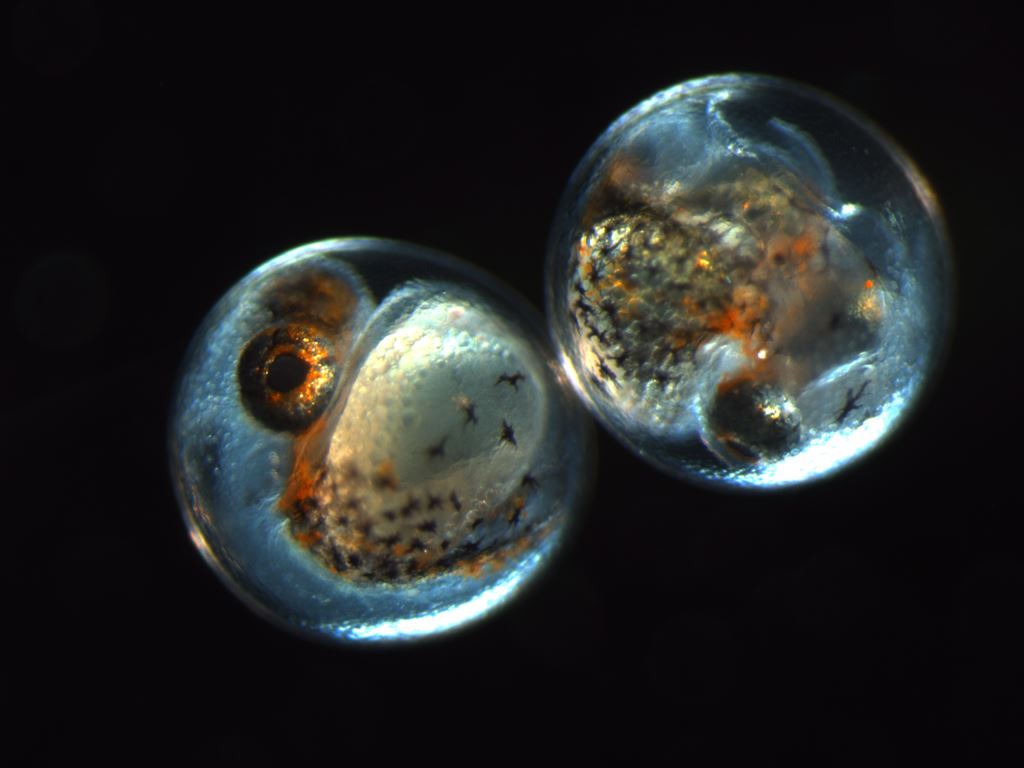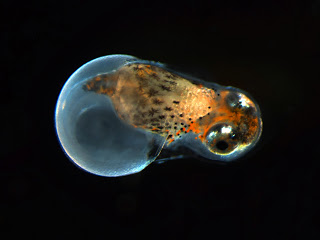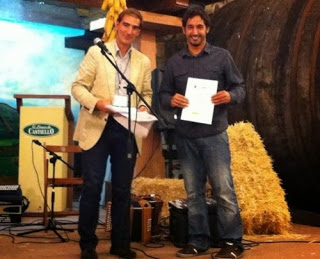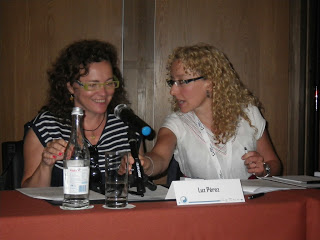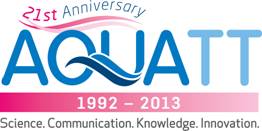International Innovation, published by Research Media, is the leading global dissemination resource for the wider scientific, technology and research communities, dedicated to disseminating the latest science, research and technological innovations on a global level. More information and a complimentary subscription offer to the publication can be found at: www.researchmedia.eu
Monthly Archives: October 2013
Two new publications in fugu
Two articles have been published in Aquaculture:
V. Gallego, L. Pérez, J.F. Asturiano, M. Yoshida. Study of pufferfish (Takifugu niphobles) sperm: Development ofmethods for short-term storage, effects of different activation media and role of intracellular changes in Ca2+ and K+ in the initiation of sperm motility. Aquaculture 414–415 (2013) 82–91.
Abstract: The first goal of this study was the development of a short-term storage method for pufferfish (Takifugu niphobles) sperm. In this respect, the best results were obtained by diluting the sperm in a seminal-like solution and keeping it in a Petri dish in chilled storage (4 °C). This method was successful in preserving sperm quality parameters without resulting in differences in fresh sperm for a relatively long-term period (7 days), for use in aquaculture matters. The addition of bovine serum albumin (BSA) to the medium did not improve the results. On the other hand, both the osmolality and the ion composition of themedia are essential factorswhich canmodulate the sperm motility parameters. The osmolality of the activating medium was the most important factor in triggering pufferfish sperm motility, and osmolalities of 750–825 mOsm/kg were necessary to initiate this process, demonstrating that it appears to be a dose-independent mechanism. Regarding the ion composition of the activationmedia, this study has shownthat despite the spermatozoa being able to initiatemovementwithout any ion in the activationmedium, the absence of ions can negatively affect the kinetic parameters of the spermatozoa. Finally, in natural conditions (seawater), the activation of sperm motility generates intracellular increases in Ca2+ and K+, suggesting that these ions play an essential role in the activation mechanismof pufferfish sperm.
V. Gallego, L. Pérez, J.F. Asturiano, M. Yoshida. Relationship between spermatozoamotility parameters, sperm/egg ratio, and fertilization and hatching rates in pufferfish (Takifugu niphobles). Aquaculture 416-417 (2013) 238–243.
Abstract: The use of high quality gametes from both males and females during in vitro fertilization (IVF) trials is an essential step in order to achieve high fertilization and hatching rates. Although aquaculture hatcheries have focused more on egg rather than spermatozoa quality, some studies have demonstrated that sperm quantity and quality have a great influence both on fertilization/hatching success and the subsequent development of the embryo and larvae. In this study we have demonstrated that sperm/egg ratio and sperm quality are factors strongly related to each other in the pufferfish (Takifugu niphobles). Our results suggest that both factors should be taken into account as unique interrelated elements,making possible to obtain high fertilization rates using a successful combination of small amount of high quality sperm or high amount of low quality sperm. In addition, coefficients of correlation and determination among all the sperm motion parameters provided by a CASA systemand fertilization/hatching rateswere estimated for the first time in a marine species. Positive significant correlationswere found in someparameters such as total and progressivemotility (0.68 and 0.7 respectively). However, curvilinear velocity (VCL), straight line velocity (VSL) and average velocity (VAP) showed the highest coefficients of correlation (0.82, 0.8, and 0.81, respectively). In this respect, spermatozoa velocity appears to be a key factor in the fertilization process, especiallywhen the number of spermatozoa per egg is limited in the aqueous environment.
Víctor Gallego awarded in ACUIFOTO 2013
The Spanish “Fundación Observatorio Español de Acuicultura” (OESA) delivered on September 25th the awards of the scientific photography contest ACUIFOTO 2013 (http://www.fundacionoesa.es/ciencia-sector/acuifoto-2013) within the framework of the XIV Congreso Nacional de Acuicultura held in Gijon. The aim of the competition is to bring the aquaculture to the society through images related to the science and the interaction of the aquaculture activity with the environment.
There were 127 photos of which 68 competed in the categoria Science and Aquaculture, and 59 in Aquaculture and the Environment. Our colleague Victor Gallego won the first prize in the category Science and Aquaculture, with his photography “The beginning of life”, which displays the time of the blossoming of a embryo of fugu, better known as puffer fish.
The group of Aquaculture and Biodiversity of the Polytechnic University of Valencia is working on optimizing the reproductive efficiency of this threatened species that, in the Asian countries is considered a dish of high quality, according to the author of the photograph. The award is endowed with 500 €.
The jury of this fourth edition was composed of representatives of the Ministry of Agriculture, Food and Environment, the Spanish Foundation for Science and Technology, the Biodiversity Foundation, the Spanish Institute of Oceanography, the Higher Council for Scientific Research, the National Institute of Agrarian and Food Research and Technology, the Business Association of Producers of Marine Cultures (APROMAR) and the Foundation OESA.
The awards ceremony of the festival ACUIFOTO 2013 took place during the XIV Congress National Aquaculture.
The 4th IWBFG has been celebrated in Albufeira (Portugal)
From September 17th to 20th, the 4th edition of the biannual International Workshop on the Biology of Fish Gametes has been held in Albufeira, in the Portuguese Algarve.
This last edition of the workshop (https://sites.google.com/site/fishgametes2013) has exceeded the number of participation from past editions (Vodnany 2007, Valencia 2009, Budapest 2011), with a total of 118 participants (39 out of them being students) from 24 nationalities, who presented a total of 112 communications: 62 oral presentations divided into 4 sessions (in the picture, Dr. Luz Pérez and Vanesa Robles, Chairmen in one of the sessions), and 50 posters.
We could count with the participation of two invited speakers. Gamete storage and preservation session was initiated with the lecture by Prof. Tiantian Zhang, entitled “Cryopreservation of fish gametes and its applications”, while the Fertilization and progeny session started with the lecture by Dr. Ferenc Müller (in the picture) entitled “What does zebrafish tell us about our genes get switched on?”.
Moreover, there was a session entitled “Standardization of experimental procedures- Cryopreservation” given by Dr. Ákos Horváth and Prof. Harald Rosenthal, and a double “How to do it” session, with the presentation entitled “Automation of the free ImageJ CASA plug-in” by Dr. Craig Purchase and “Fish germline cryobanking” by Dr. Elsa Cabrita.
The local organizers made a great job in all senses, and the selected venue (Grande Real Santa Eulália Resort & Hotel Spa) resulted an excellent place for our work and for the short leisure times we could enjoy there. Very special thanks to Maria Teresa Dinis (4th on the left in the picture), Sonia Martínez Páramo (2nd on the left), Catarina Oliveira (middle) and Elsa Cabrita (first on the right).
In this edition we could count with co-funding by AQUAGAMETE COST Action, which covered, partially, the attendance of 51 participants.
Moreover, during the first day, the representative members of the participant countries in the AQUAGAMETE COST Action attended the Management Committee meeting, in which the activities performed during the first year were reviewed, and the activities to perform during the second year (March 2014-February 2015) were planned. They will be announced in this web.
FREE FP7-funded Aquaculture Training Opportunity: Course on Chromosome Set Manipulation and Gamete Collection
Training Announcement
Free FP7-funded Aquaculture Training Course on Chromosome Set Manipulation and Gamete Collection
Applications are now being accepted for the third training course organised by the FP7-funded AQUAEXCEL (Aquaculture Infrastructures for Excellence in European Fish Research) project. The course, The Application of Chromosome Set Manipulations and the Importance of Gamete Collection and Management in Aquaculture, will be hosted by the Institute of Aquaculture (IoA) at University of Stirling, Scotland, on 18-22 November 2013. Additional inputs will be provided by scientists based at l’Institut National de la Recherche Agronomique (INRA), France, and the Institute of Marine Research (IMR), Norway. Course attendance is free, thanks to EC Seventh Framework Programme (FP7) funding.
AQUAEXCEL aims to integrate key aquaculture research infrastructures across Europe in order to promote their coordinated use and development. AQUAEXCEL is organising four pioneering new technical training courses in total, with each course focusing on different aspects of aquaculture experimentation. These courses are unique in putting emerging aquaculture infrastructure centres of excellence at the forefront. They also present a valuable opportunity for researchers and technicians in this field to further their experience.
Chromosome Set Manipulation (CSM) technology is used in fish and shellfish aquaculture and has important applications in the development of unique genotypes for basic research (haploid, meiotic and mitotic gynogenetic and androgenetic individuals) and direct commercial applications to the aquaculture industry (sterile triploids and investigation and manipulation of sex-determination systems e.g. YY males). The Application of Chromosome Set Manipulations and the Importance of Gamete Collection and Management in Aquaculture course will give practical training in the collection, handling and storage of gametes for these purposes, from a range of species, but with a focus on salmonids and tilapias as examples.
The course is aimed at participants who want to gain experience in gamete handling and management and the application of CSM techniques in the course of their work or research.
Course attendance is free, thanks to EC FP7 funding. Participants are expected to pay for their own travel, subsistence and accommodation. Participants are requested to submit their CV and a brief letter outlining their motivation for wanting to attend the course. Please find attached to this email the course information leaflet and registration form. For more information and online registration, please visit www.aquaexcel.eu/training_courses.
The first AQUAEXCEL course, which focused on Recirculating Aquaculture System (RAS) Technology and was provided by Wageningen University (WU), the Netherlands, with expertise from the Norwegian Institute of Food, Fishery and Aquaculture (Nofima), l’Institut Francais de Recherche Pour l’Exploitation de la Mer (IFREMER) and the Institute for Marine Resources and Ecosystem Studies (IMARES), was very successful and oversubscribed. The second AQUAEXCEL training course: Contribution of Genomic Approaches to the Development of Sustainable Aquaculture for Temperate and Mediterranean Fish, will be hosted by the Institut National de la Recherche Agronomique (INRA) in Rennes, France, on 16-18 October 2013. The final course, Efficient Utilisation of New Monitoring and Control Systems in Fish Experiments, will be provided by The Norwegian University of Science and Technology (NTNU) and SINTEF Sealab, on 19-22 May 2014. Registration for this course will open in January 2014.
Issued on behalf of the AQUAEXCEL project by AquaTT. If you do not wish to receive further updates from AquaTT, please reply to this email with “unsubscribe” in the subject line.
____________________________________________________________
Trevor Purtill
Communications Manager, AquaTT
trevor@aquatt.ie
Tel: +353 1 644 9008
Postal Address: P.O. Box 8989, Dublin 2, Ireland
www.aquatt.ie
AQUAEXCEL University of Stirling Training Course 3 Information Leaflet
AQUAEXCEL Univ Stirling TC3 Registration Form

